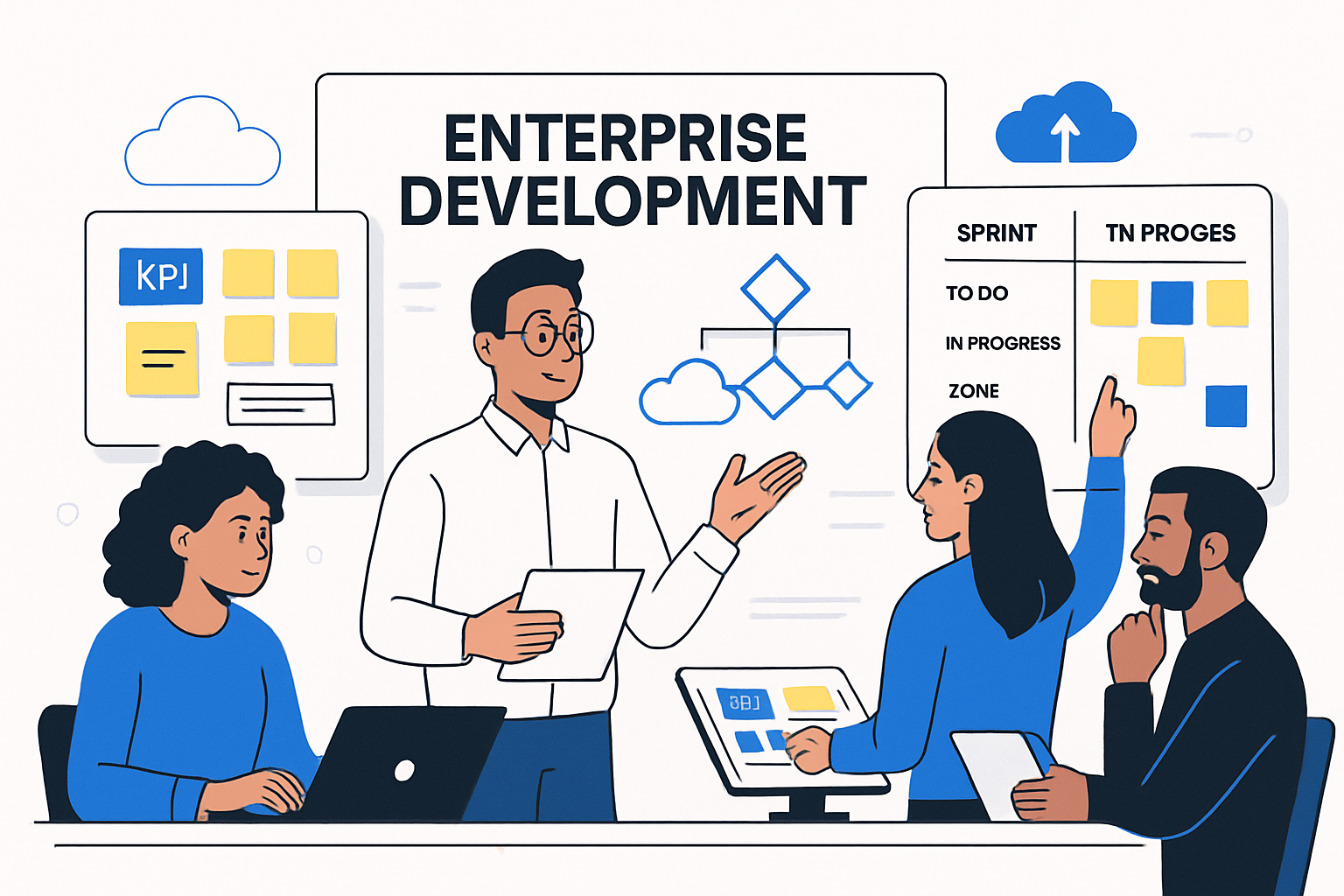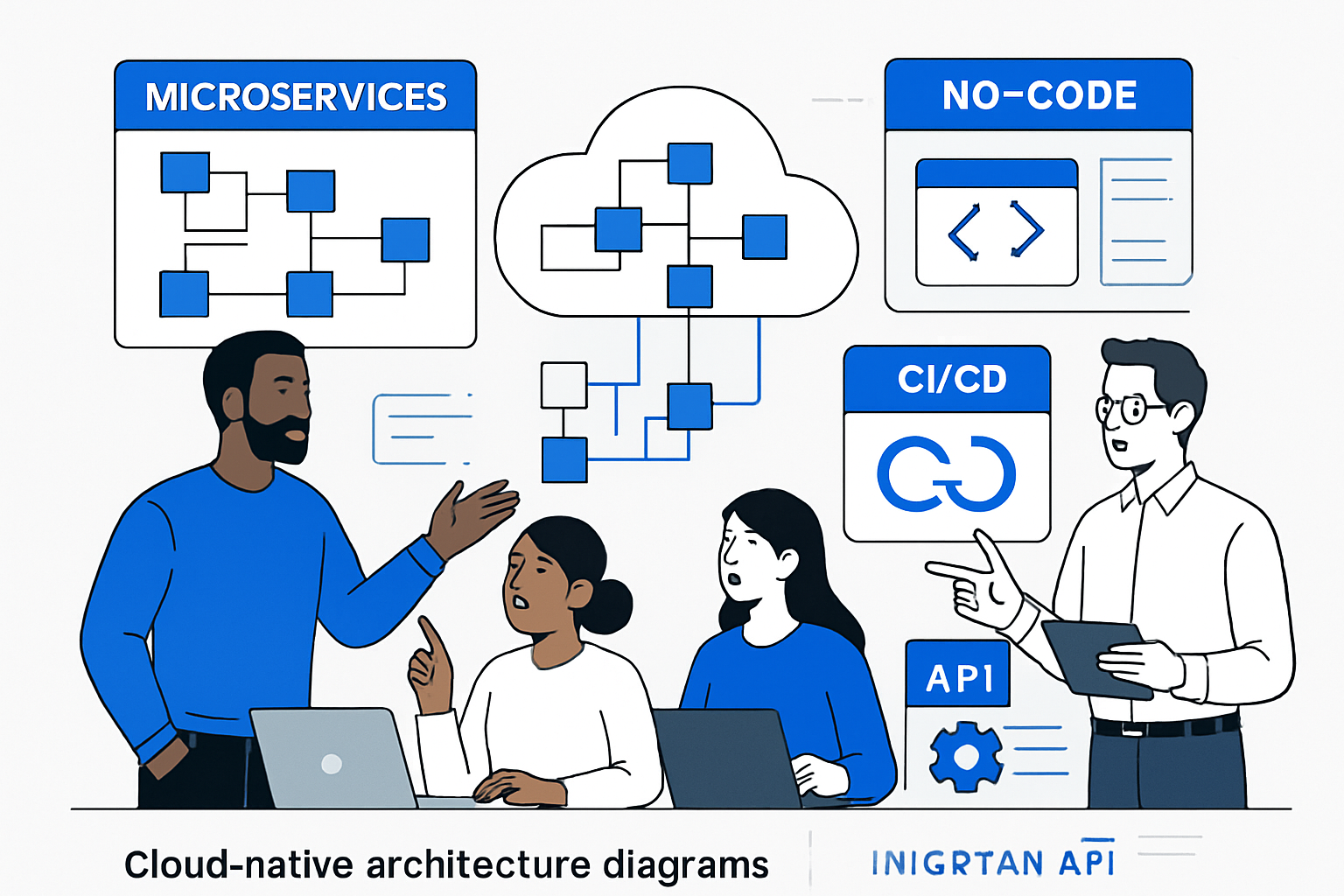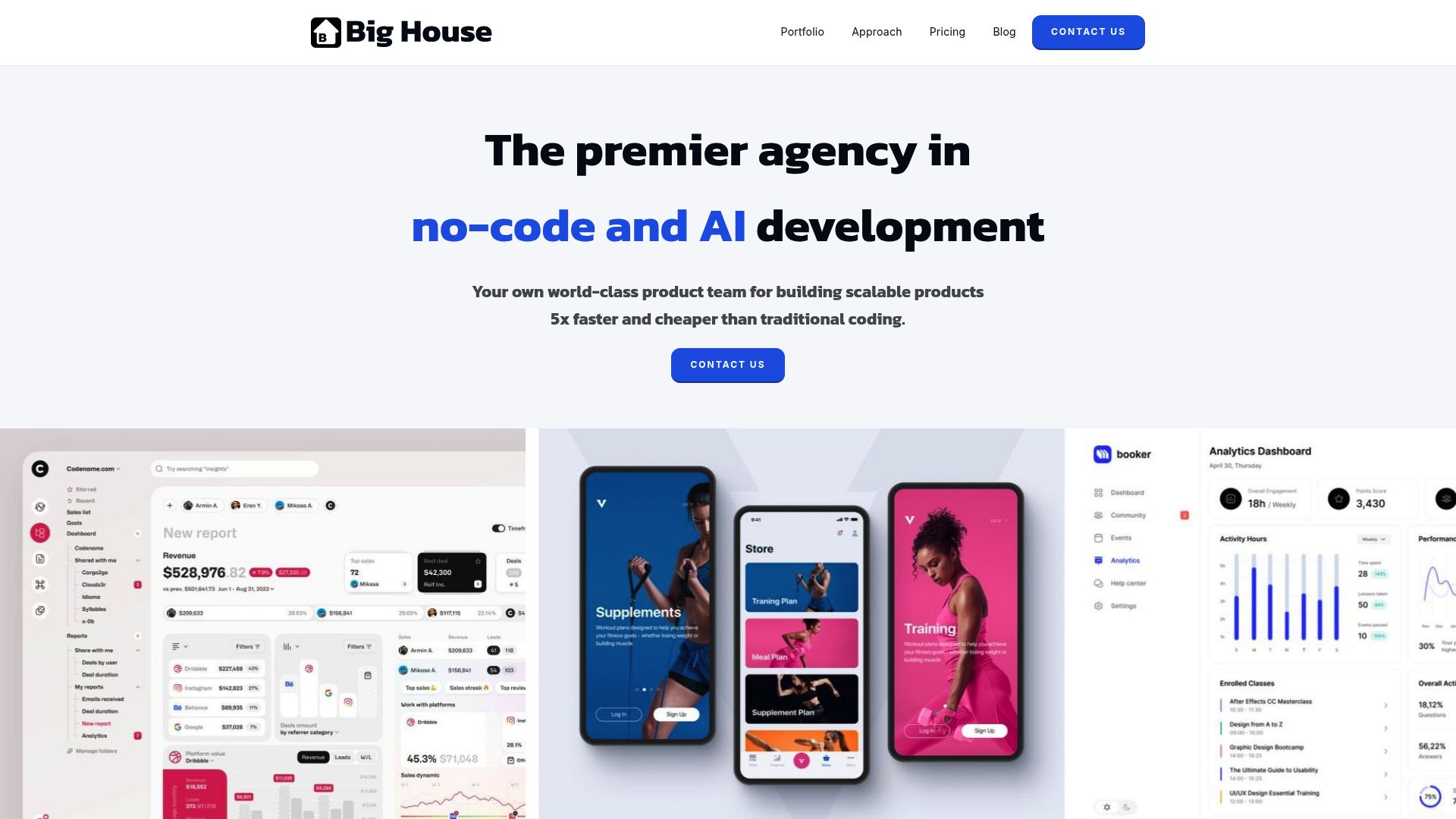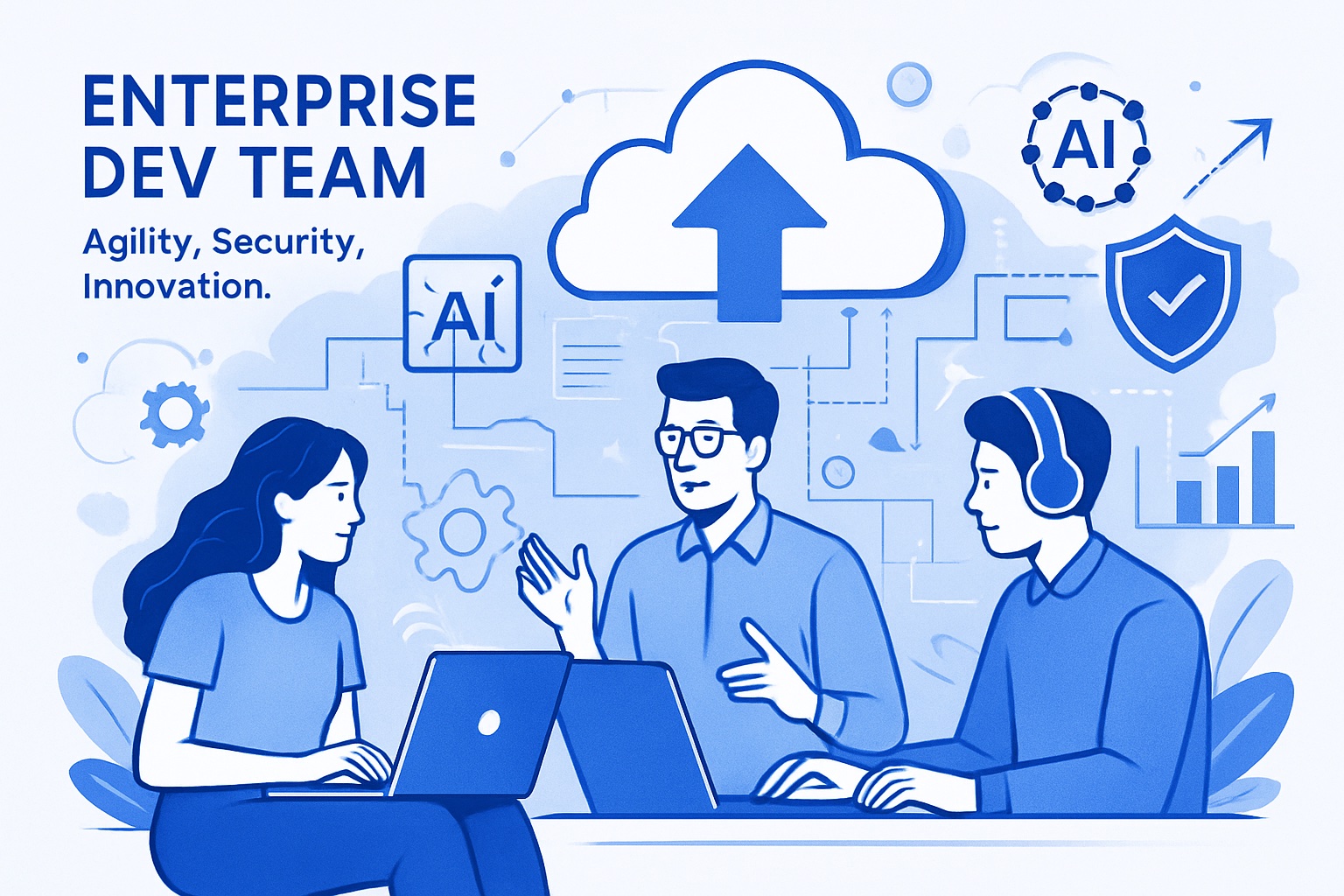As technology races forward, enterprise dev is evolving at a breakneck pace. Digital transformation is no longer a buzzword—it’s the new reality for organizations building scalable and secure solutions.
From cloud platforms to AI-driven tools, the possibilities for enterprise dev are expanding rapidly. This shift brings fresh opportunities, but also complex challenges for teams aiming to deliver innovation and efficiency.
Adopting modern best practices in enterprise dev can mean the difference between thriving and falling behind. Ready to future-proof your strategy? Dive into this guide and discover how to lead your enterprise dev initiatives to success in 2025.
The 2025 Enterprise Development Landscape
The enterprise dev landscape in 2025 is rapidly transforming, shaped by technological innovation and evolving business demands. Organizations must adapt to stay competitive, balancing legacy systems with new paradigms. Understanding the major trends, challenges, and opportunities is critical for building robust enterprise dev strategies.
Key Trends and Drivers
Enterprise dev is riding a wave of digital transformation as organizations demand faster, more tailored solutions. Several trends are rapidly reshaping the field:
A telling statistic: 90% of Fortune 100 companies rely on platforms like GitHub for secure software delivery. For a deeper dive into how these trends impact large-scale projects, see the Enterprise-Level Application Development Guide.
Challenges Facing Enterprise Dev Teams
Despite the promise of innovation, enterprise dev teams face significant hurdles:
Enterprise dev teams must address these obstacles head-on to achieve sustainable results and avoid costly pitfalls.
Opportunities for Innovation
At the same time, 2025 brings exciting opportunities for enterprise dev innovation:
By embracing these opportunities, enterprise dev initiatives can deliver more value, accelerate growth, and future-proof their organizations.
Strategic Planning for Enterprise Development Success
Effective strategic planning is the backbone of any successful enterprise dev initiative. By taking a structured approach to objectives, roadmapping, resources, and measurement, organizations can navigate complexity and deliver impactful solutions.

Setting Clear Objectives and Stakeholder Alignment
Defining clear business objectives lays the foundation for successful enterprise dev. Before writing a single line of code, teams must engage with executives, managers, and end-users to gather requirements that reflect real business needs.
Techniques such as stakeholder interviews, collaborative workshops, and continuous feedback loops ensure all voices are heard. Empowering non-technical teams to participate is crucial—no-code tools are making this easier than ever. For a deeper look at how these platforms are transforming stakeholder involvement, see No-Code Empowerment in Enterprises.
By aligning goals early, enterprise dev projects can minimize misunderstandings and maximize business impact.
Project Scoping and Roadmapping
Breaking down projects into manageable phases is essential for enterprise dev. Start with discovery to clarify requirements, then build a minimum viable product (MVP), followed by scaling and optimization.
Agile methodologies support adaptive planning and iterative validation, allowing teams to respond to change without losing momentum.
Typical phases:
Using sprint cycles and regular check-ins, teams can prioritize features that align with business value and manage shifting requirements effectively.
Budgeting, Resource Allocation, and Risk Management
A robust budgeting process considers the total cost of ownership, including cloud services, licensing, and long-term support. Allocating resources for development, QA, security, and ongoing maintenance ensures nothing falls through the cracks in enterprise dev.
Identifying risks early—such as scope creep or timeline delays—allows teams to develop mitigation strategies. Create a risk register and revisit it throughout the project.
Transparent resource planning supports predictable delivery and helps keep enterprise dev projects on track.
Measuring ROI and Success Metrics
To demonstrate the value of enterprise dev, teams must define and track key performance indicators (KPIs). Common metrics include user adoption rates, application performance, and cost savings from process optimization.
Many organizations track KPIs in dashboards or regular reports, making it easy to spot trends and areas for improvement.
KPIDescriptionExample BenefitUser Adoption% of target users onboardedHigher engagementPerformanceApp speed and uptimeImproved user satisfactionCost SavingsReduction in manual work/reworkOperational efficiencyTime to MarketSpeed from idea to deploymentCompetitive advantage
By focusing on measurable outcomes, enterprise dev teams can continuously optimize and showcase their impact.
Architecture, Tools, and Technology Choices
Choosing the right architecture, tools, and technologies is pivotal for successful enterprise dev in 2025. As digital transformation accelerates, these decisions impact scalability, security, and long-term adaptability.

Modern Enterprise Architecture Patterns
Enterprise dev teams in 2025 have a wealth of architecture patterns to choose from. The three most common are microservices, monolithic, and serverless architectures. Each offers distinct trade-offs in scalability, complexity, and maintenance.
Here’s a quick comparison:
PatternProsConsMicroservicesHighly scalable, flexible, fault-tolerantComplex orchestration, more overheadMonolithicSimpler deployment, easier to testHard to scale, risky updatesServerlessCost-efficient, auto-scalingVendor lock-in, limited customization
Cloud-native principles—such as portability, resilience, and automation—are now essential. Hybrid and multicloud strategies are also gaining traction. Enterprises often use Azure and AWS for mission-critical workloads, achieving both flexibility and compliance.
With enterprise dev, the right architecture aligns with business goals, security needs, and future growth.
Selecting the Right Development Platforms
Platform choice directly affects productivity and the ability to adapt to change. Traditional platforms (like Java or .NET) are still vital for complex needs. However, low-code and no-code platforms are rapidly gaining favor for their speed and accessibility.
Key selection criteria include:
For rapid prototyping, platforms like Bubble enable fast, no-code app development. For large-scale enterprise dev, robust frameworks like .NET or Java remain industry standards.
Curious about how low-code and no-code platforms compare? Check out this detailed Key Differences: Low-Code vs. No-Code in 2025 guide for a comprehensive breakdown.
The right platform empowers both technical and non-technical teams to innovate quickly and securely.
Essential Development Tools and Practices
Modern enterprise dev relies on a suite of tools to ensure efficiency and quality. Version control systems like GitHub are foundational for team collaboration and code management.
Other essential tools and practices include:
Collaboration platforms streamline communication across distributed teams. These tools not only accelerate delivery but also reduce errors and rework, which is vital for enterprise dev success.
Establishing a robust toolchain supports agility and continuous improvement at scale.
Data Management and Integration
Data is at the core of every enterprise dev initiative. Breaking down data silos ensures accurate, actionable insights across the organization.
Key strategies include:
Machine learning is increasingly used to analyze enterprise data, uncovering trends and powering smarter decision-making.
Effective integration and management are essential for delivering unified, data-driven enterprise dev solutions.
Cloud, On-Premises, and Hybrid Deployment Models
Deployment choices can make or break enterprise dev projects. Cloud, on-premises, and hybrid models each offer unique benefits and challenges.
Let’s break down the pros and cons:
Trends show a steady shift toward cloud and hybrid models for agility and scalability. For example, many organizations leverage Azure Dev/Test environments to optimize costs and accelerate development cycles.
Choosing the right deployment strategy keeps enterprise dev projects resilient and future-proof.
Security, Compliance, and Governance in 2025
Security, compliance, and governance are now mission-critical for every enterprise dev initiative. The stakes are higher than ever as organizations navigate new threats, tighter regulations, and ever-expanding attack surfaces. Let’s break down what matters most in 2025—and how your team can stay ahead.
Building Security and Compliance into the SDLC
Embedding security into every stage of the SDLC is essential for future-ready enterprise dev. Shifting security left means integrating vulnerability scanning, automated code reviews, and compliance checks from the start. Teams are embracing DevSecOps to ensure continuous monitoring and fast response to threats.
Yet, the rush to innovate—especially with AI and automation—can sometimes put software quality at risk. As highlighted in AI's Impact on Software Quality, balancing speed with robust security is a top concern for enterprise dev leaders.
Continuous training, real-time security dashboards, and platforms like GitHub Advanced Security are now standard. By treating security and compliance as core pillars, organizations reduce risk and maintain stakeholder trust.
Data Privacy and Regulatory Compliance
Enterprise dev teams face a labyrinth of regulations: GDPR, CCPA, HIPAA, and more. Staying compliant requires a proactive approach to data encryption, access controls, and audit trails.
Modern cloud platforms offer built-in compliance features, helping teams automate much of the heavy lifting. Regular audits, privacy impact assessments, and clear data handling policies are now indispensable for enterprise dev.
A simple table for reference:
RegulationFocus AreaKey RequirementGDPREU Data PrivacyUser consent, DSRsCCPACalifornia PrivacyOpt-out, disclosureHIPAAHealth InformationSafeguards, reporting
Teams that prioritize privacy from day one build trust and avoid costly penalties.
Identity, Access Management, and Authentication
Securing access is foundational for enterprise dev. Multi-factor authentication (MFA), role-based access controls (RBAC), and zero trust principles are now the gold standard.
API security and third-party integration safeguards are critical as systems grow more interconnected. Automated identity management solutions reduce manual errors and improve scalability.
Best practices include:
Strong IAM policies help enterprise dev projects prevent unauthorized access and data breaches.
Governance and Policy Enforcement
Centralized governance is vital for enterprise dev, especially in complex environments. Enterprise portals now provide a single pane of glass for policy management, compliance reporting, and workflow automation.
Automated policy enforcement ensures that standards are applied consistently across teams and regions. These tools also make audit trails transparent, simplifying regulatory reporting.
Clear governance structures empower teams to innovate without sacrificing oversight. The result is a more agile, yet compliant, enterprise dev operation.
Addressing Emerging Threats
Threats to enterprise dev are evolving fast. Supply chain attacks, insider threats, and ransomware now top the risk lists.
Regular security training keeps teams alert to the latest tactics. Simulated phishing, red teaming, and threat modeling are increasingly standard. Automated monitoring tools catch anomalies in real time.
A resilient enterprise dev strategy adapts quickly, learning from incidents and continuously improving defenses. With proactive measures, organizations can outpace emerging risks and protect their digital assets.
AI, Automation, and the Future of Enterprise Dev
The future of enterprise dev is being shaped by rapid advances in AI, automation, and the rise of no-code/low-code platforms. Organizations are reimagining how they build, scale, and maintain applications, unlocking new efficiencies and possibilities. Let’s explore how these trends are transforming the landscape and what they mean for your enterprise dev strategy.
Integrating AI/ML into Enterprise Applications
AI and machine learning are no longer just buzzwords; they are pivotal in modern enterprise dev. Organizations leverage AI for predictive analytics, intelligent automation, and smarter workflows. For example, AI-driven systems can monitor workplace safety using IoT sensors, reducing risks and boosting productivity.
By integrating AI into enterprise dev projects, teams gain:
Want to dive deeper? Check out this comprehensive guide on AI in App Development for 2025 for actionable strategies on embedding AI in your enterprise dev roadmap.
Automation Across the Development Lifecycle
Automation is becoming a cornerstone of enterprise dev, streamlining everything from testing to deployment. Automated testing tools catch issues early, while CI/CD pipelines ensure continuous delivery without bottlenecks. Workflow automation platforms like GitHub Actions and Azure DevOps help teams release updates faster and with fewer errors.
Key automation benefits in enterprise dev:
By embedding automation throughout the software lifecycle, enterprise dev teams can focus on innovation and deliver higher-quality solutions at scale.
No-Code/Low-Code Evolution
No-code and low-code platforms are democratizing enterprise dev, allowing business users to build and launch solutions without deep technical expertise. These tools accelerate prototyping and empower non-technical stakeholders to address business needs quickly.
For instance, platforms like Bubble enable rapid MVP development and internal tool creation. This shift in enterprise dev means:
Embracing no-code/low-code approaches helps enterprise dev keep pace with evolving business demands and supports digital transformation.
Balancing Innovation with Governance
As enterprise dev teams adopt AI and automation, maintaining strong governance becomes essential. It’s important to ensure that new technologies align with business rules and compliance standards. Shadow IT—when teams use unapproved tools—can create risks and reduce visibility.
Best practices for balancing innovation in enterprise dev include:
By proactively managing governance, enterprise dev teams can foster innovation while protecting organizational integrity and security.
Building High-Performance Teams and Cultures
Building high-performance teams is at the heart of successful enterprise dev. As technology evolves, so must the people and cultures driving these initiatives. Creating an environment where innovation, collaboration, and adaptability thrive is non-negotiable for enterprise dev success.
Structuring Effective Enterprise Dev Teams
A well-structured enterprise dev team brings together a blend of skills, perspectives, and responsibilities. Typical roles include:
Modern teams thrive on cross-functional collaboration and shared ownership. Developers are no longer just coders—they are strategic contributors aligning digital solutions with business goals. Learn more about this evolution in Developers as Business Enablers.
Best Practices for Remote and Distributed Teams
Remote and distributed work is now the norm for many enterprise dev teams. Success depends on the right mix of communication tools, agile ceremonies, and asynchronous workflows.
Teams leverage platforms like Slack, Microsoft Teams, and cloud-based project boards for seamless collaboration. Regular stand-ups, sprint reviews, and retrospectives keep everyone aligned, regardless of location. Cloud infrastructure further enables distributed teams to work efficiently across time zones.
Continuous Learning and Upskilling
Continuous learning is vital for staying ahead in enterprise dev. With rapid advances in AI, cloud, and security, regular investment in training is essential.
Upskilling programs, certifications, and peer mentorship foster a growth mindset. Encouraging knowledge sharing—be it through lunch-and-learns or internal workshops—ensures teams are always ready to adapt to new technologies and frameworks.
Managing Change and Driving Adoption
Rolling out new applications or platforms can be disruptive. Effective change management strategies help enterprise dev teams guide users through transitions.
Collecting user feedback early and often leads to better user experiences. Proactive communication, training sessions, and clear documentation support smoother adoption and reduce resistance to change.
Measuring and Rewarding Team Success
To sustain high performance, enterprise dev teams need clear metrics and recognition. Common KPIs include delivery speed, code quality, user satisfaction, and overall business impact.
KPIDescriptionDelivery SpeedTime from idea to deploymentCode QualityDefect rates, maintainabilityUser SatisfactionFeedback, NPS scoresBusiness ImpactRevenue, cost savings
Recognizing achievements and incentivizing innovation keeps motivation high and drives ongoing excellence.
No-Code and AI-Driven Enterprise Development: The Big House Technologies Approach
The world of enterprise dev is undergoing a radical transformation as organizations look for faster, smarter, and more affordable ways to build business-critical solutions. No-code and AI-driven approaches are empowering companies to innovate without the traditional barriers of cost, complexity, or lengthy timelines.

No-code platforms like Bubble are redefining enterprise dev by enabling rapid prototyping and delivery. These tools allow both technical and non-technical users to build robust applications, slashing time-to-market and reducing overhead. As highlighted in the Rise of No-Code Platforms, businesses are leveraging no-code for greater agility, flexibility, and cost-effectiveness—key drivers for digital transformation.
AI is another cornerstone of next-gen enterprise dev. From automating workflows to powering predictive analytics and personalizing user experiences, AI is unlocking new efficiencies and insights. According to AI's Role in Software Development, the integration of AI is reshaping how software is built, tested, and deployed, allowing teams to focus on strategic goals while AI handles repetitive or complex tasks.
Big House Technologies brings these innovations together with a comprehensive, client-centric approach to enterprise dev. Their end-to-end service covers everything from initial scoping and UI/UX design to development, testing, and launch. Recent case studies include the rapid delivery of internal tools for enterprises, scalable MVPs for startups, and seamless integrations for large organizations. The results? Up to 5x faster delivery, significant cost savings, and robust, scalable solutions—making Big House Technologies a trusted partner for digital transformation.
Whether you’re an enterprise seeking agility, a startup racing to launch, or a non-technical founder with a big idea, the combination of no-code and AI-driven enterprise dev offers unmatched speed, quality, and value. With deep expertise, proven results, and a focus on partnership, Big House Technologies is helping organizations across industries build the future—today.
Now that you’ve seen how smart planning, the right tools, and modern best practices can set you up for enterprise development success in 2025, why not take the next step for your own team? If you’re ready to move faster and validate your ideas more efficiently, you don’t have to wait months. You can turn your concept into a fully functional MVP in just weeks—and see real results sooner. Let’s make your vision a reality: Launch Your MVP in Weeks, Not Months.




About Big House
Big House is committed to 1) developing robust internal tools for enterprises, and 2) crafting minimum viable products (MVPs) that help startups and entrepreneurs bring their visions to life.
If you'd like to explore how we can build technology for you, get in touch. We'd be excited to discuss what you have in mind.
Other Articles
Discover the ultimate guide to developing application in 2025. Learn step-by-step strategies, best tools, and key tips to launch your first app successfully.
Discover the 2025 custom software development guide with expert insights on trends, processes, costs, and partner selection to drive your business innovation.
Discover 7 innovative ways to use Bubble No Code in 2025 for AI integration, workflow automation, analytics, and more Unlock new digital potential today

